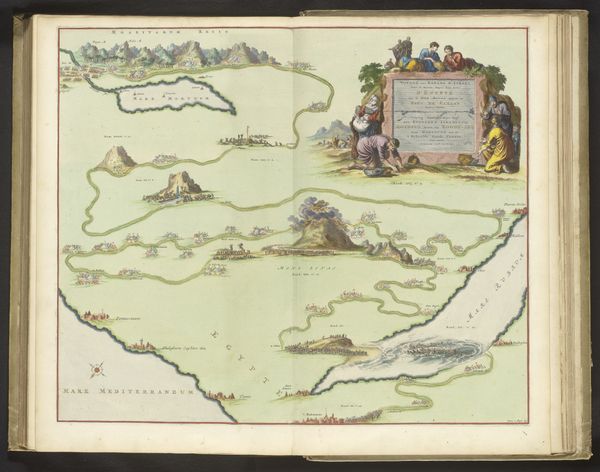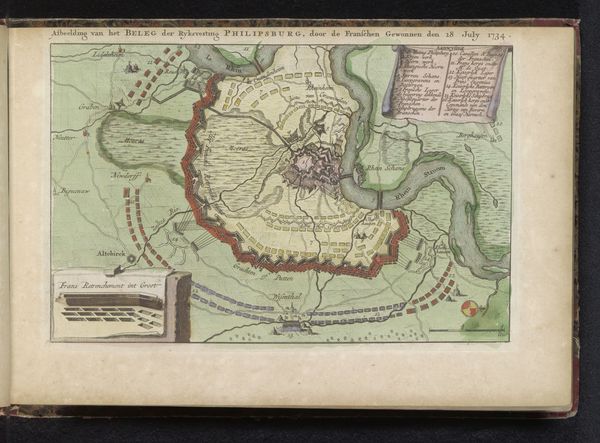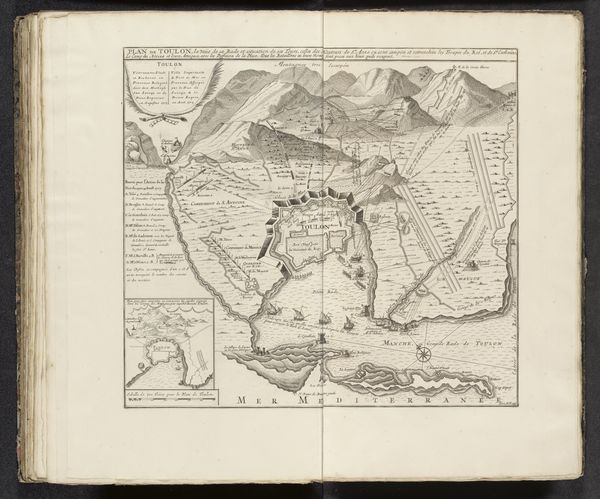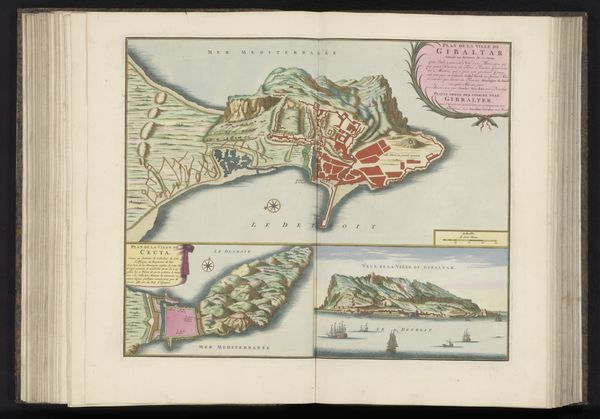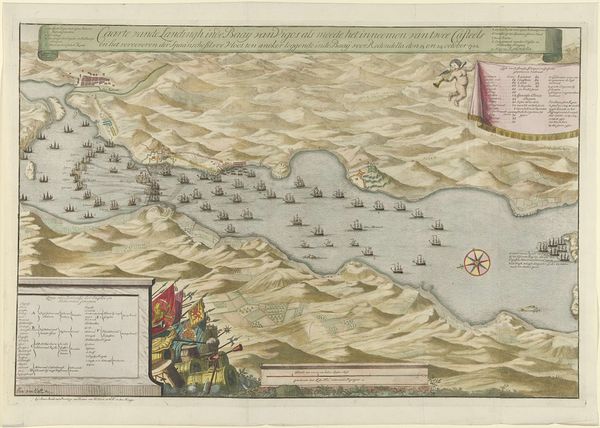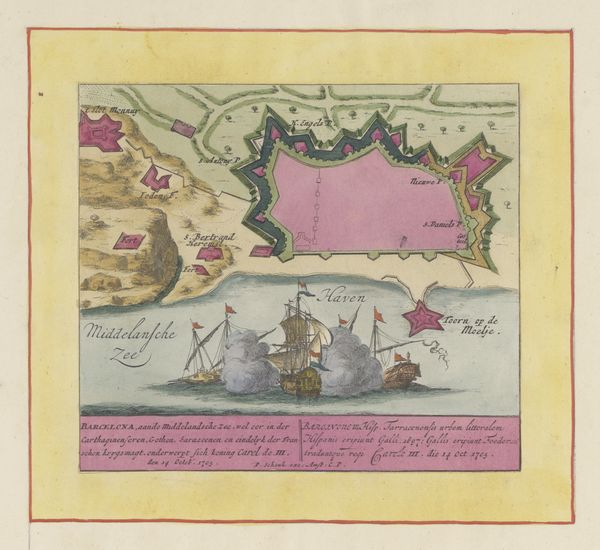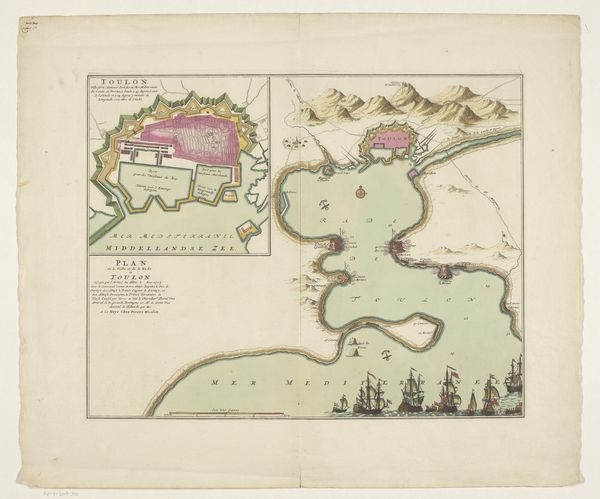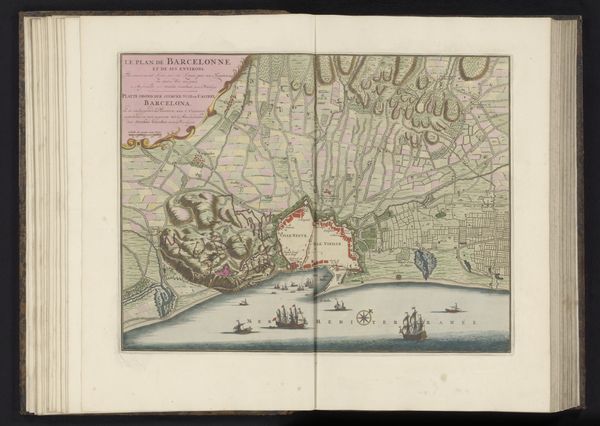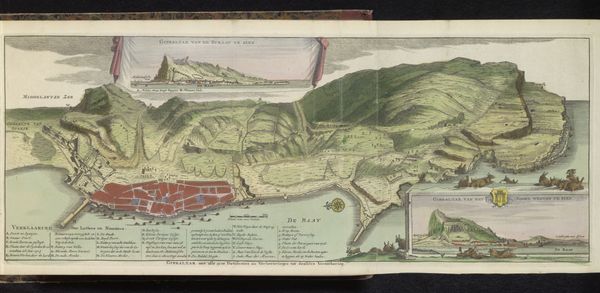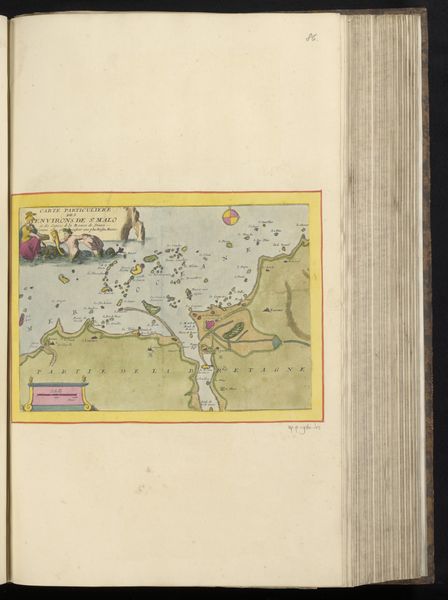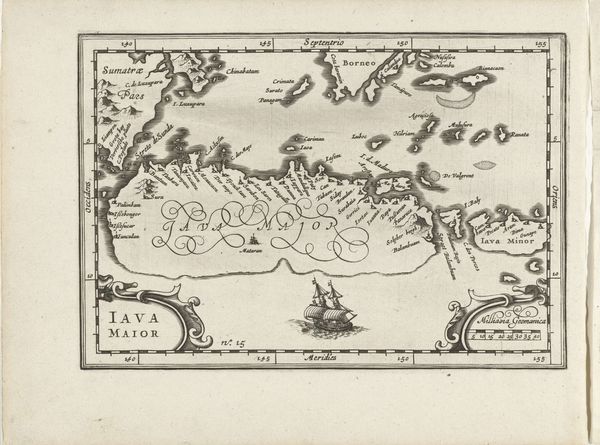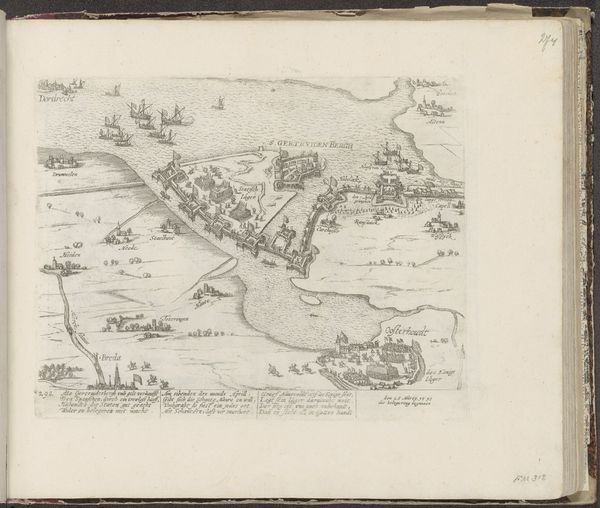
Zeeslag in de baai bij Vigo en de verovering van de Spaanse zilvervloot, 1702 1702
0:00
0:00
painting, watercolor
#
water colours
#
baroque
#
painting
#
landscape
#
watercolor
#
cityscape
#
history-painting
Dimensions: height 490 mm, width 720 mm
Copyright: Rijks Museum: Open Domain
Editor: So, here we have Jan van Call's "Zeeslag in de baai bij Vigo en de verovering van de Spaanse zilvervloot, 1702," made in 1702, using watercolor. At first glance, it strikes me as very detailed for such a chaotic scene. It's almost like a bird's eye view, displaying all the events at once. What do you see in this piece? Curator: I see a carefully constructed visual narrative, laden with symbols of power, conflict, and ultimately, cultural shift. Water, throughout history, has signified both chaos and opportunity, doesn't it? Editor: It does. Curator: Here, the bay becomes a stage. Notice how the ships are rendered, not just as vessels, but as stand-ins for empires clashing. Consider the legends and tables bordering the central image. These are visual tools the artist used to frame understanding for the viewer, similar to medieval altarpieces using symbolism to tell a story. Editor: That’s interesting. I hadn't thought of the legends as part of the visual storytelling itself. What about the cherub playing a violin, seemingly removed from the battle? Curator: Exactly! Its presence is intriguing. Angels often symbolize divine intervention or a call to awareness. The violin, then as now, often suggests a delicate, precise beauty against the scene’s conflict and upheaval. Van Call uses it to signify both sides of this event, destruction and also grace. This wasn't just a battle, but a reshaping of cultural power through symbols that endure even today. How does this visual language change your initial reaction? Editor: It makes me realize how much more is going on than just the battle. It’s not just a picture of a battle; it's about the implications, the cultural impact, the sort of psychological weight it carried then, and perhaps still does. Curator: Precisely. Recognizing these historical symbols allows us to view history not just as a timeline of events, but as a tapestry of ever-evolving meanings, enriching our experience.
Comments
No comments
Be the first to comment and join the conversation on the ultimate creative platform.
